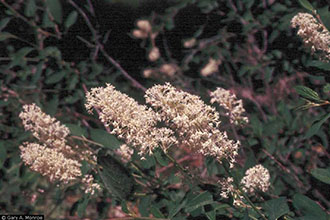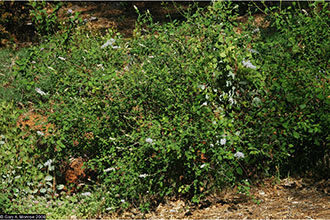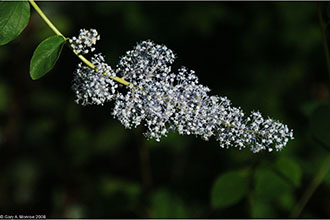Taxonomy: Kingdom - Plantae (plants). Subkingdom - Tracheobionta (vascular plants). Superdivision - Spermatophyta (seed plants). Division - Magnoliophyta (flowering plants). Class - Magnoliopsida (dicotyledons). Subclass - Rosidae. Order - Rhamnales. Family - Rhamnaceae (buckthorn). Genus - Ceanothus L. Species - Ceanothus parvifolius (S. Watson) Trel.
Ecology: Deer brush is a nitrogen-fixing shrub that grows in open sun to partial shade. When overtopped by trees, deer brush dies out. It is typically successional after fire, landslide, logging, mining, or other stand-replacing events. Deer brush seedlings establish in the initial postdisturbance community. If fire or other disturbance is frequent enough to prevent conifers from establishing a canopy, deer brush and other shrubs may occupy a site indefinitely. Deer brush is a component of chaparral communities including Arizona chaparral. In the Cascade-Sierra Nevada cordillera, it is most common in montane chaparral but also occurs in upper, moister portions of lower-elevation chaparral types such as chamise (Adenostoma fasciculatum) and manzanita (Arctostaphylos spp.). Deer brush grows in the understories of conifer and oak (Quercus spp.) communities and in scattered patches within timberlands and woodlands. Patches of decadent deer brush are common in open Coulter pine (Pinus coulteri) stands. Deer brush often dominates early successional stages of low-elevation conifer communities.



